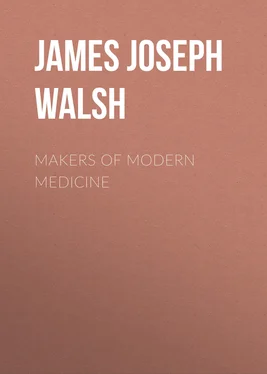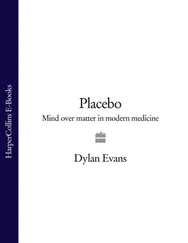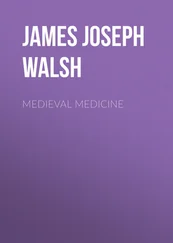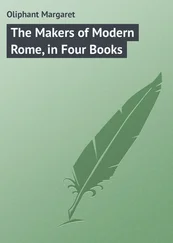James Walsh - Makers of Modern Medicine
Здесь есть возможность читать онлайн «James Walsh - Makers of Modern Medicine» — ознакомительный отрывок электронной книги совершенно бесплатно, а после прочтения отрывка купить полную версию. В некоторых случаях можно слушать аудио, скачать через торрент в формате fb2 и присутствует краткое содержание. Жанр: foreign_prose, Медицина, foreign_antique, на английском языке. Описание произведения, (предисловие) а так же отзывы посетителей доступны на портале библиотеки ЛибКат.
- Название:Makers of Modern Medicine
- Автор:
- Жанр:
- Год:неизвестен
- ISBN:нет данных
- Рейтинг книги:3 / 5. Голосов: 1
-
Избранное:Добавить в избранное
- Отзывы:
-
Ваша оценка:
- 60
- 1
- 2
- 3
- 4
- 5
Makers of Modern Medicine: краткое содержание, описание и аннотация
Предлагаем к чтению аннотацию, описание, краткое содержание или предисловие (зависит от того, что написал сам автор книги «Makers of Modern Medicine»). Если вы не нашли необходимую информацию о книге — напишите в комментариях, мы постараемся отыскать её.
Makers of Modern Medicine — читать онлайн ознакомительный отрывок
Ниже представлен текст книги, разбитый по страницам. Система сохранения места последней прочитанной страницы, позволяет с удобством читать онлайн бесплатно книгу «Makers of Modern Medicine», без необходимости каждый раз заново искать на чём Вы остановились. Поставьте закладку, и сможете в любой момент перейти на страницу, на которой закончили чтение.
Интервал:
Закладка:
"I foresee very well that I shall encounter no little opposition to my views and I put my invention before the public with that anticipation. I realize, however, that envy and blame and even hatred and calumny have never failed to come to men who have illuminated art or science by discoveries or have added to their perfection. I expect to have to submit to this danger myself, but I think that no one will be able to call any of my observations to account. I have written only what I have myself learned by personal observation over and over again, and what my senses have taught me during long hours of toil. I have never permitted myself to add or subtract anything from my observations because of the seductions of preconceived theory.
"I would not wish, however, that any one should think that this method of diagnosis, which I suggest, has been developed to its utmost perfection. I confess with all candor that there are defects in the system which conscientious observation will, I hope, amend with time. It is possible that there are even other important truths for the recognition of disease still hidden from this method of diagnosis. Some of these may prove of great usefulness for the differentiation, prognosis and cure of diseases of the chest.
"This was the reason why in my personal experience, after I had succeeded in finding the signs in the chest and proceeded further to the investigation of their causes so far as my own observation could help me, I have always afterward had recourse to the commentaries of the illustrious Baron Van Swieten, since I have considered that whatever can be desired by an observant man is sure to be found in his work. I have thus been able to spare you a long disquisition. I have found in his work a sure basis of knowledge on which my slight superstructure may be raised up to view.
"I do not doubt, however, that I have accomplished a work which will earn the gratitude of all true devotees of the art of medicine, since I have succeeded in making clear certain things which shed not a little light on our knowledge of the obscure diseases of the chest, a subject hitherto very imperfectly understood.
"I have omitted many things that seem doubtful because they are as yet not sufficiently elaborated. I shall endeavor, however, faithfully to devote myself to [literally to sweat over] the further development of these points. Finally, it has not been my effort to write in any elegant diction. I have chosen a style in which I may be thoroughly understood.
Vale;
"December 31, 1760."
Auenbrugger's own realization of the importance of his work and of its significant value for medicine kept him faithfully investigating his chosen subject, though he seems to have met with very little encouragement from members of the medical profession near him. It is extremely difficult to understand how his practical observations and thoroughly conservative claim failed to attract more attention than they did from really great physicians who were deeply interested in the progress of medicine. At least two distinguished writers on medicine, Van Swieten and De Haen, compiled treatises on medical subjects that included the consideration of diseases of the chest within a few years after Auenbrugger's Inventum Novum appeared, and yet neither of them devotes any space to the question of percussion nor hints at its possible value.
Van Swieten's work consisted of commentaries upon the aphorisms of Boerhaave. The Vienna professor did not, however, limit himself to the consideration of the aphorisms alone, but made his work also a compendium of his own clinical experiences with acute and chronic diseases. As a matter of fact his commentaries on the aphorisms are each a monograph on some special disease. The two last volumes of this commentary appear after the publication of Auenbrugger's book on percussion, one volume being published in 1772, the other in 1774.
The first of these articles contains a long article on pulmonary consumption, and the other an almost equally long chapter on pleurisy with effusion. In neither of the volumes, however, is there any mention of percussion, or of Auenbrugger's work, though if Van Swieten had given any serious attention to the subject, he must have become convinced how valuable Auenbrugger's invention was in the diagnosis of these conditions.
This omission is all the more surprising as Auenbrugger was a pupil of Van Swieten's and practically dedicated his Inventum Novum to his master. He mentions Van Swieten's work several times in his little book. Auenbrugger's investigations were not unknown to Van Swieten then, and the only conclusion to be drawn from his neglect to mention Auenbrugger's methods is that he deliberately omitted reference to them because of his failure to recognize the value of the discovery. This constitutes one of the most serious blots on Van Swieten's medical career. He was succeeded as the head of the clinic in Vienna by De Haen, who also came from Leyden and brought with him the methods of Boerhaave's clinical school. As the time during which Auenbrugger was making his valuable observations at the Spanish military hospital coincides with the years when De Haen was professor of clinical medicine, and when he was frequently indebted to his colleague of the Spanish hospital for his cases for demonstration, it is impossible to conceive that Auenbrugger or his work should have remained unknown to the distinguished head of the clinic.
There is not a single mention, however, to be found anywhere in De Haen's voluminous writings of Auenbrugger or his work. De Haen's principal work is his Ratio Medendi ( System of Medicine ), published at Vienna during the years from 1757 to 1779. It consists of eighteen volumes, in which all the important forms of disease as well as the rarer types of affections that came to the clinic are thoroughly discussed. De Haen treated of pneumonia, of consumption, of pleurisy with effusion, which he calls dropsy of the chest, but never suggests the use of percussion. On the contrary, he complains in a number of places how very obscure and difficult of diagnosis are thoracic diseases and especially dropsy of the chest, pleuritic and pericardial exudates, and insists on the ease with which errors of diagnosis may be made in these subjects. He failed completely to recognize how much light had just been thrown on this subject by Auenbrugger's work, and how much easier the differential diagnoses of these conditions were to be as the result of systematic percussion.
Some of the commentaries on Auenbrugger's work are not entirely depreciative, however. In Ludwig's Commentaria de Rebus in Scientia Naturali et Medicina Gestis for the year 1762, published at Leipzig, there is an excellent notice of Auenbrugger's work within a year after its appearance. It is not known who the reviewer was, but he calls Auenbrugger's discovery "a torch that was designed to illumine the darkness in which diseases of the thorax had up to this time lain concealed." A brilliant future was prophesied for the new method of examination. It is evident that the writer not only thoroughly comprehended Auenbrugger's work, but had himself applied the percussion method for purposes of diagnosis.
This is almost the only favorable and reasonably intelligent review of Auenbrugger's work to be found in the medical journals of the time. In the new Medical Library, issued by Rudolph Vogel, Professor of Medicine in Göttingen, published in six volumes in 1766, there is a short mention of Auenbrugger's book and his new discovery. This reference is, however, an extremely curious affair. The good professor completely failed to understand in what the new discovery really consists. It is clear that he had never read Auenbrugger's book. He seems to have heard of the subject from some medical friend, and to have obtained an entirely wrong notion. He talks of Auenbrugger's new diagnostic method as if it were an imitation of Hippocrates's succussion method of recognizing the presence of fluid in the chest by shaking the patient till the liquid gave the characteristic splash.
Читать дальшеИнтервал:
Закладка:
Похожие книги на «Makers of Modern Medicine»
Представляем Вашему вниманию похожие книги на «Makers of Modern Medicine» списком для выбора. Мы отобрали схожую по названию и смыслу литературу в надежде предоставить читателям больше вариантов отыскать новые, интересные, ещё непрочитанные произведения.
Обсуждение, отзывы о книге «Makers of Modern Medicine» и просто собственные мнения читателей. Оставьте ваши комментарии, напишите, что Вы думаете о произведении, его смысле или главных героях. Укажите что конкретно понравилось, а что нет, и почему Вы так считаете.












